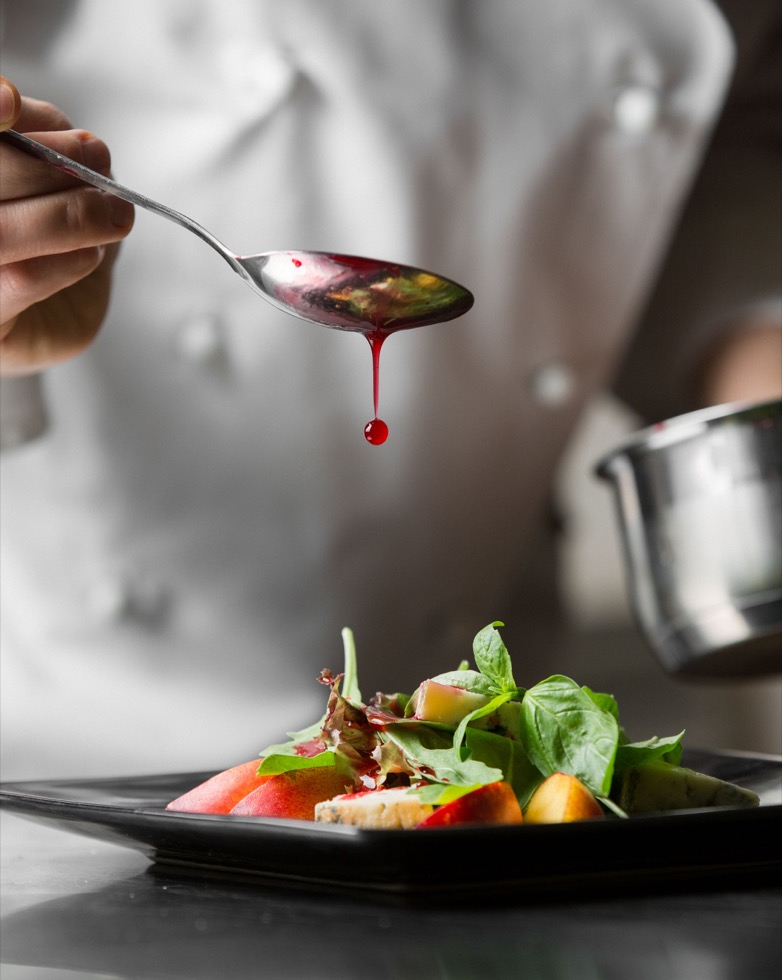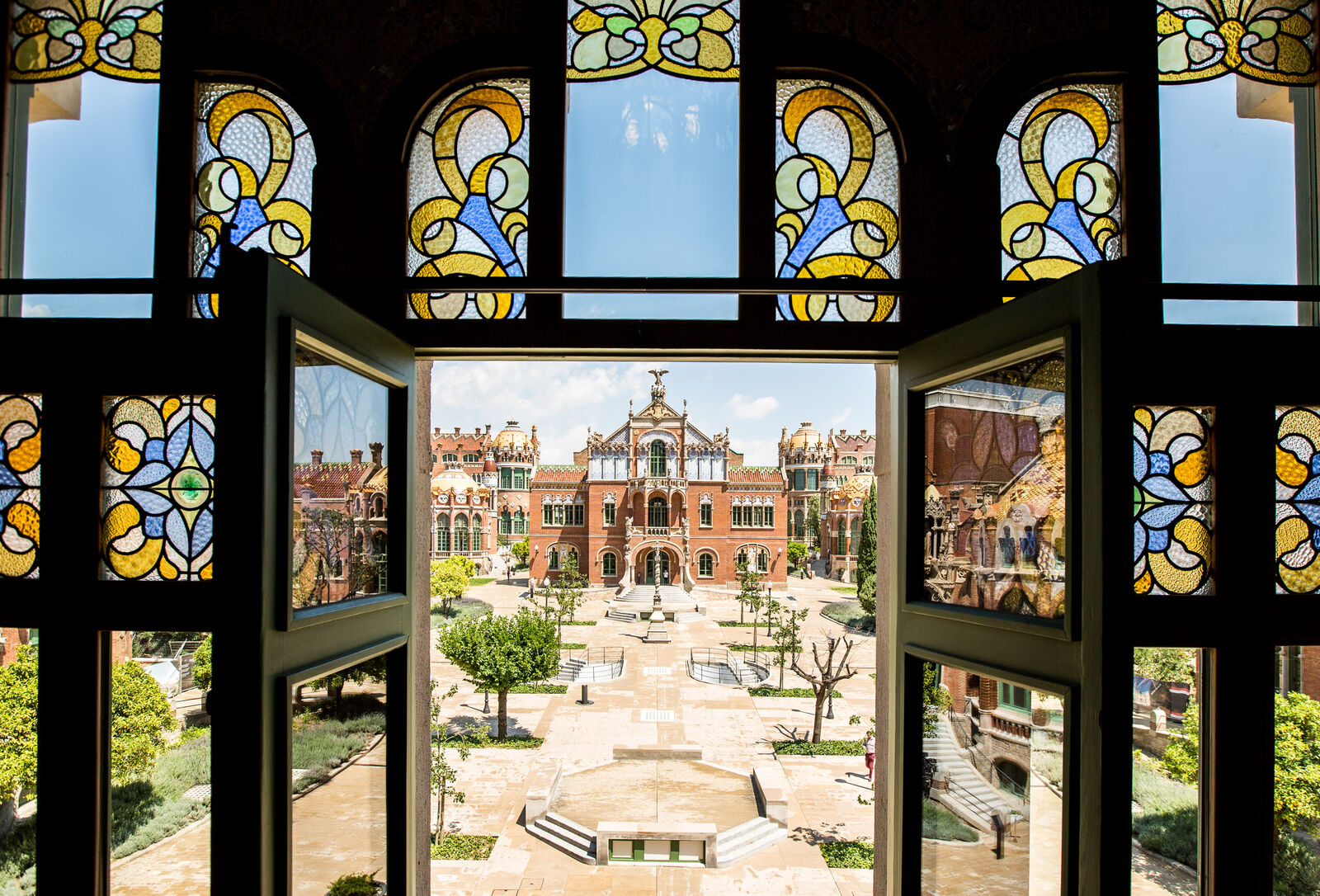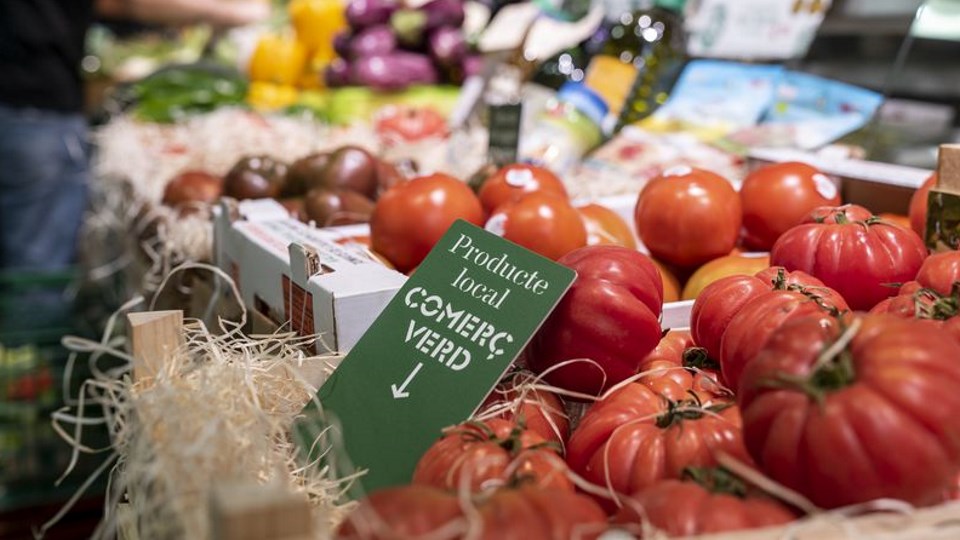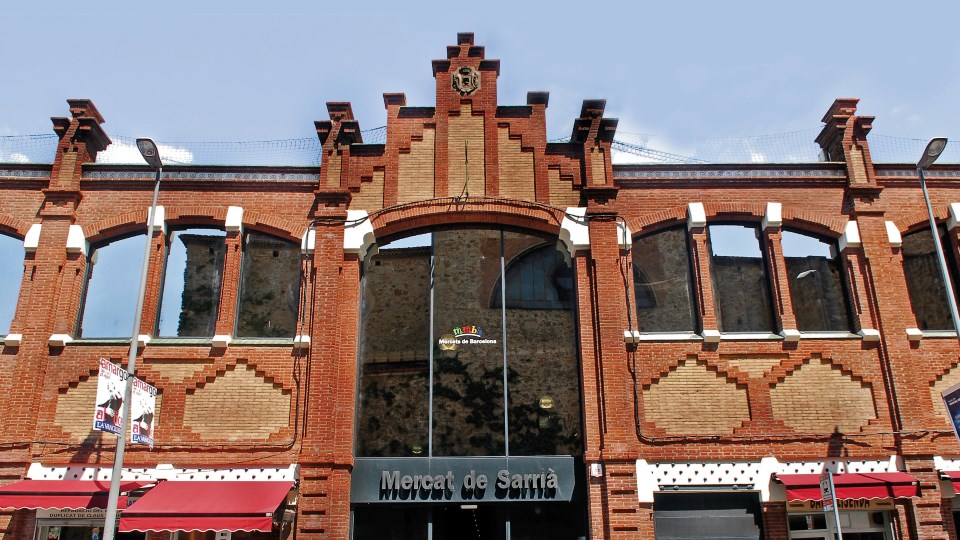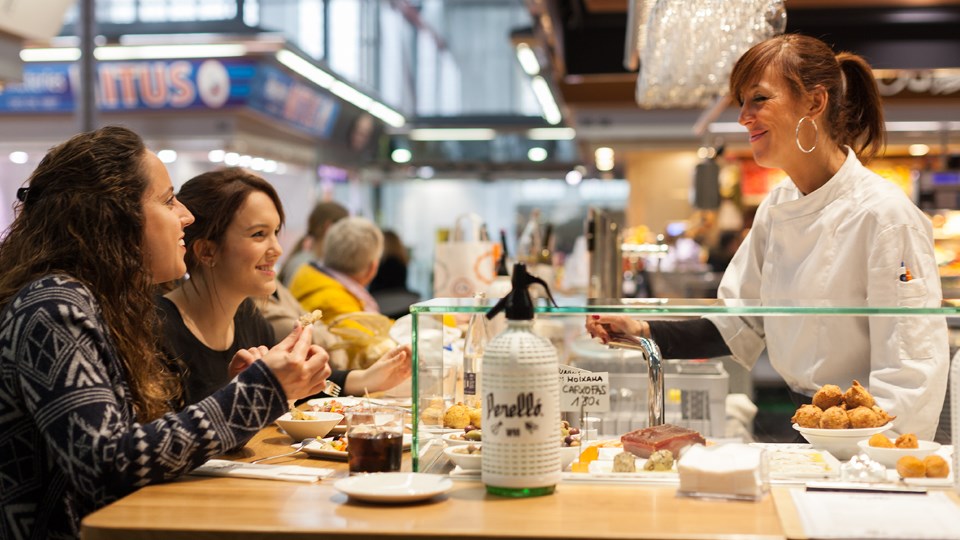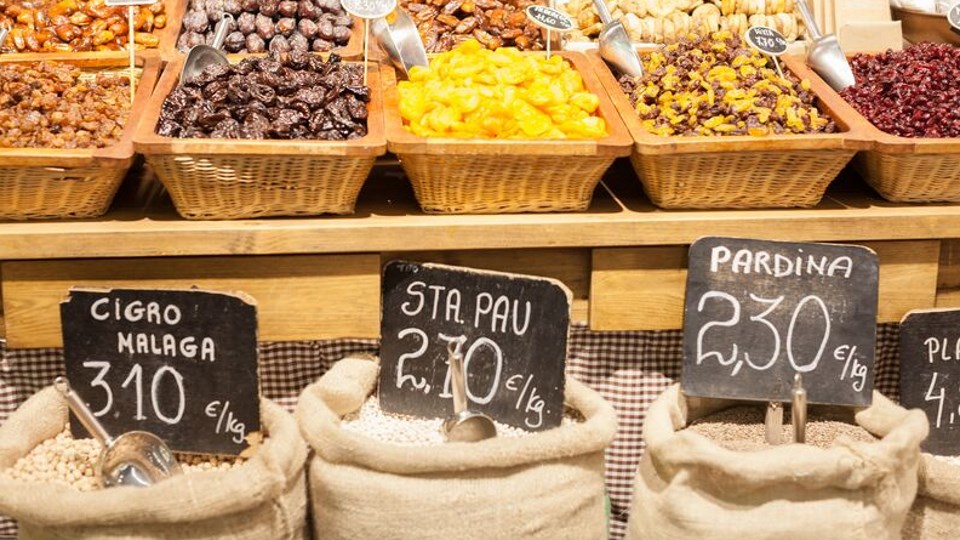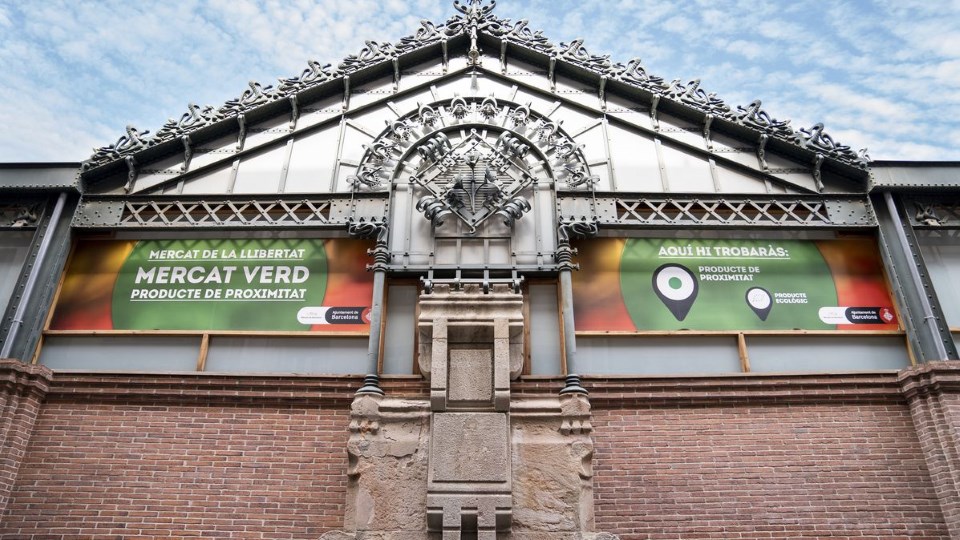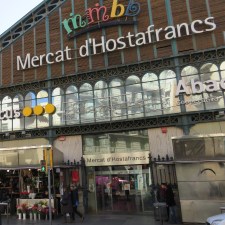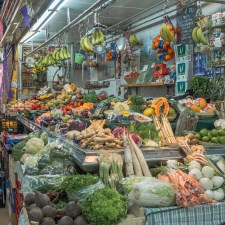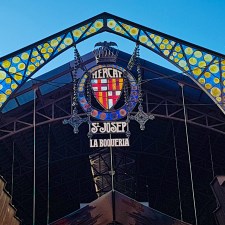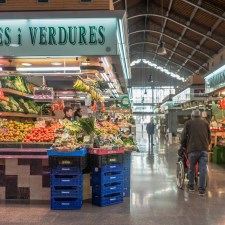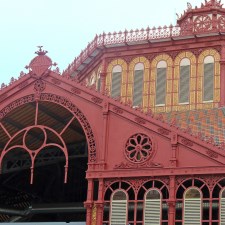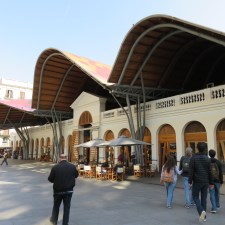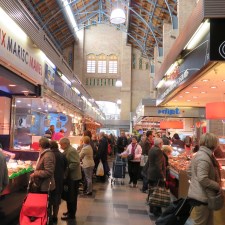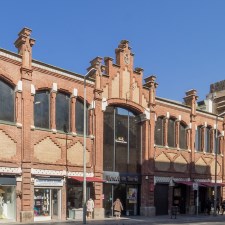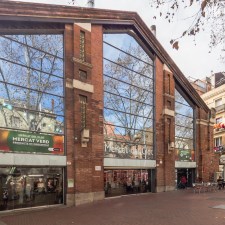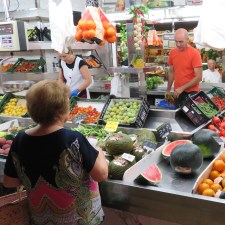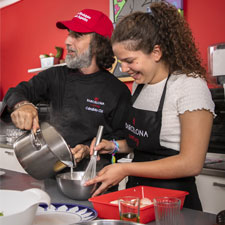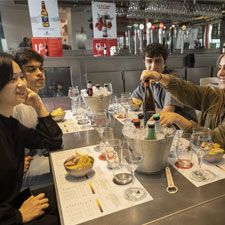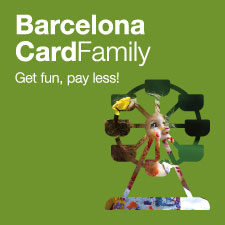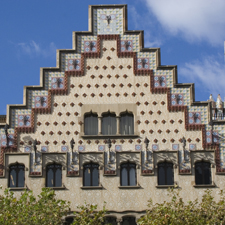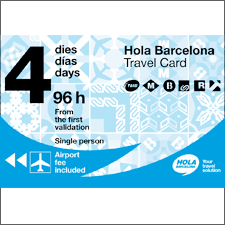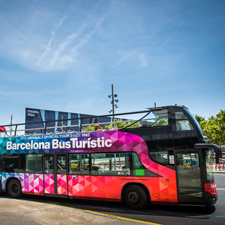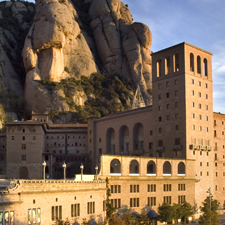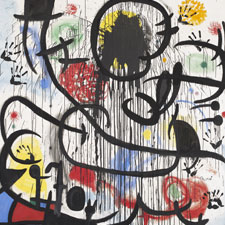Few cities in the world have such a rich and varied network of markets as Barcelona. There are 39 of them selling fresh food. The city's food markets supply us with fresh, organic and locally sourced produce brought in daily from the farms and fish markets in the neighbouring counties. Some of the stalls now display the “Comerç Verd”, or green commerce, sign, to show they sell this type of product. Barcelona's markets are a unique part of the city's heritage in every sense: their architecture and design, their history, the variety of the products on offer and their role as hubs of community life in every neighbourhood make them iconic places you simply have to visit. Wander between the different stalls, be entranced by the aromas and colours, and stop for a drink and a bite to eat at their restaurants and bars which serve up dishes made with the produce from the market. Come and visit them and enjoy an experience that encapsulates the spirit of the city!
-
Mercat d'Hostafrancs
The market stands on Carrer de la Creu Coberta, one of the busiest shopping streets in the Sants neighbourhood. In the 19th century, there was a brickworks here, as well as other factories in the vicinity, and the market supplied the workers and their families. It opened in 1888, the same year as the Mercat de la Concepció, and both buildings have the cast-iron structure, exposed-brick walls and facades with small arched windows with glass panes that were characteristic of the time.
How to get there: Metro L1-Hostafrancs | Bus 52, D20 | Barcelona Bus Turístic-Plaça d'Espanya.
Services: adapted for people with reduced mobility, car park, online selling, sustainable commerce, restaurant.Contact details : Carrer de la Creu Coberta, 93, 08014, Barcelona | Tel: 934 132 307
-
Mercat de l'Abaceria Central
This market opened in the vibrant neighbourhood of Gràcia in 1892. Its origins can be traced back to the open-air market in Plaça de la Revolució when Gràcia was still a village. It is currently housed in temporary premises on Passeig de Sant Joan while its original site, on Travessera de Gràcia, is undergoing a major refurbishment. It is a vast structure with three main aisles and an eye-catching curved roof. It was originally known as the Mercat de Santa Isabel but was renamed the Mercat de la Revolució a few years later.
How to get there: Metro L4-Joanic/L5-Verdaguer | Bus 39, 47, 114, H8, V19.
Services: adapted for people with reduced mobility, car park, online selling, delivery service, sustainable commerce.Contact details : Travessera de Gràcia, 186, 08012, Barcelona | Web: www.mercatabaceria.cat
-
Mercat de la Boqueria
The Boqueria is undoubtedly one of Barcelona's most iconic attractions and is considered one of the world's best fresh-food markets. The Boqueria was first mentioned in the 13th century but the current building dates from 1860. It is also known as the Mercat de Sant Josep. It is a bustling temple to food where you'll find locally grown produce and delicacies from around the world. The main entrance on La Rambla features a spectacular arch in the Catalan art-nouveau, or modernista, style, with stained-glass panels surmounted by the city's ancient coat of arms.
How to get there: Metro L3-Liceu | Bus 59, V13 | FGC L6, L7, S1, S2-Catalunya | Renfe R1/R2/R3/R4-Plaça Catalunya | Barcelona Bus Turístic-Plaça Catalunya.
Services: adapted for people with reduced mobility, car park, online selling, delivery service, sustainable commerce, restaurant.Contact details : La Rambla, 91, 08001, Barcelona | Web: www.boqueria.info
-
Mercat de la Concepció
This building, with its metal structure, stands in the heart of the Eixample district, in an area where there have been open-air markets since the middle of the 18th century. It is one of the main hubs of community life in the area. The architect Antoni Rovira i Trias won the competition launched by Barcelona City Council to design the market and it opened in 1888 to supply the local residents, in what was then the most heavily populated part of the Eixample. A recent refurbishment has transformed the market into a modern and functional place, which hosts an interesting programme of food-related events and workshops.
How to arrive: Metro L4-Girona/L5-Verdaguer | Bus H10 | Renfe R2-Passeig de Gràcia.
Services: adapted for people with reduced mobility, car park, online selling, delivery service, sustanaible commerce, restaurant.Contact details : Carrer d'Aragó, 313-317, 08009, Barcelona | Web: www.laconcepcio.cat
-
Mercat de Sant Antoni
This market complex sells fresh produce as well as clothes, fabrics and accessories, all under one roof. On Sundays you can browse the outdoor second-hand book market. The Mercat de Sant Antoni was designed by Antoni Rovira i Trias – who also designed the Mercat de la Concepció – as part of the city's expansion plan, the Pla Cerdà, and it opened in 1882. It was the first market built outside the city walls because the Boqueria, the Born and Santa Caterina couldn't keep up with the demand for food in the late 19th century. A major refurbishment project began in 2007 and major archaeological finds were uncovered that have now been incorporated into the structure.
How to get there: Metro L2-Sant Antoni | Bus 55, 120, 121, 141, D50, H16.
Services: adapted for people with reduced mobility, car park, sustainable commerce, restaurant.Contact details : Carrer del Comte d'Urgell, 1, 08011, Barcelona | Web: www.mercatdesantantoni.com
-
Mercat de Santa Caterina
The Mercat de Santa Caterina is a major hub in the neighbourhoods of Santa Caterina, Sant Pere and La Ribera. The building dates from 1848, although it underwent a major refurbishment, completed in 2005, by the architects' practice EMBT (Enric Miralles and Benedetta Tagliabue). Its multi-coloured roof, by Toni Comella, has become one of the most recognisable symbols of Barcelona. Inspired by Gaudí's famous broken-tile, or trencadís, mosaic technique, its colours symbolise the fruit and vegetables that are the centrepiece of the market.
How to get there: Metro L1/L4-Urquinaona | Bus 120, V15.
Services: adapted for people with reduced mobility, car park, online selling, delivery service, sustainable commerce, restaurant.Contact details : Avinguda de Francesc Cambó, 16, 08003, Barcelona | Web: www.mercatsantacaterina.com
-
Mercat de Sants
This market is the focal point of the lively district of Sants. Built in 1913, it underwent a major refurbishment which was completed in 2014. It is housed inside a brick building in the Catalan art-nouveau, or modernista, style, with a distinctive triangular structure and decorative columns. You can see the city's ancient coat of arms above the windows on the main façade. Today the building is a perfect blend of tradition and modernity, with all the charm of a time-honoured market that has been painstakingly restored with modern touches that are fully integrated into the original structure.
How to get there: Metro L1-Mercat Nou, L1/L5-Plaça de Sants | Bus 52, 70, D20.
Services: adapted for people with reduced mobility, car park, online selling, delivery service, sustainable commerce, restaurant.Contact details : Carrer de Sant Jordi, 6, 08028, Barcelona | Web: www.santsmercat.com
-
Mercat de Sarrià
Standing on what was once the site of the parish allotments of the rectory of Sant Vicenç de Sarrià, this historic building in the uptown district of the city underwent a complete refit and reopened in 2007. It is now an open-plan, functional space where you'll find the finest-quality produce. Its main façade is made of exposed brick surmounted by a triangular structure. There are 22 large rectangular windows in the central section that allow natural light into the building, and seven decorative columns along the top.
How to get there: Bus 68, 75, 130, H4 | FGC L12-Reina Elisenda | Barcelona Bus Turístic-Sarrià.
Services: car park, online selling, delivery service, sustainable commerce, restaurant.Contact details : Passeig de la Reina Elisenda de Montcada, 8, 08034, Barcelona | Web: www.mercatsarria.com
-
Mercat del Clot
This market, dating from the late 19th century, stands not far from Plaça de les Glòries. It was built in 1889, in a style predating the art-nouveau movement, and has interesting features, such as exposed brick walls and decorative ceramic and stone elements. The glass panels fitted during the most recent refit give the market a contemporary look. It stands in a pleasant square and retains all the original neighbourhood charm.
How to get there: Metro L1-Clot | Bus 32, 34, 192, H10, H12 | Tram T5/T6-Glòries.
Services: adapted for people with reduced mobility, car park, online selling, delivery service, sustainable commerce, restaurant.Contact details : Plaça del Mercat, 26, 08018, Barcelona | Web: www.mercatdelclot.net
-
Mercat d'Horta
Oficines d'informació
The Mercat d'Horta was built in 1951 to meet the growing demands of the gradually expanding population. It is one of the markets that were built in Barcelona during the 1950s and has become the true focus of community life in the neighbourhood. You'll find stalls that have been run by the same family for generations, selling all kinds of produce, as well as flowers, clothes and jewellery. There are also bars where you can stop for a drink and a bite to eat.
How to get there: Metro L5-Horta | Bus 86, 102, 185.
Services: adapted for people with reduced mobility, car park, online selling, delivery service, sustainable commerce, restaurant.The Mercat d'Horta will be under construction until 2027. A provisional market will be set up on Lisboa Street starting from November 21.
Contact details : Carrer del Tajo, 75, 08032, Barcelona | Web: www.mercathorta.com





